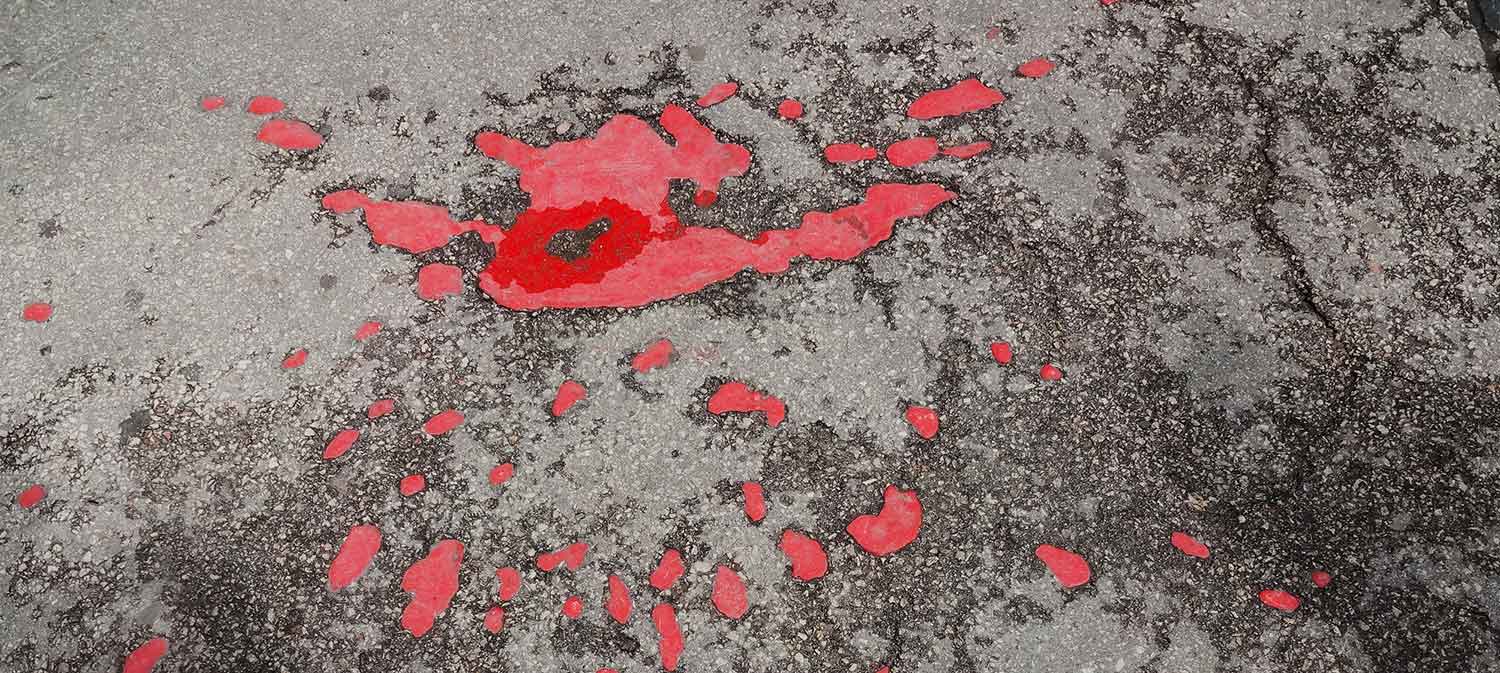“Sarajevo Roses”
An Oral History ProseAkram Dashtban
Translated by Natalie Haghverdian
2018-09-05
“Sarajevo Roses: Towards Politics of Remembering” written by Azra Junuzović[1] and translated by Mohammad Karimi was published by the Resistance Literature and Art Bureau and Soureh Mehr Publishing Company. The book was published in 1110 volumes structured in 213 pages in 2017. The book is about the mortar shell explosions in the streets of Sarajevo painted by the red color, as a symbol of Bosnian people blood. We interviewed the translator of the book, Mohammad Karimi to tell us more.
Concerning his reasons to choose this book to translate, Karmi says: “Morteza Sarhangi, head of Resistance Literature and Art Bureau, recommended the book. The reason was to introduce the war memorials of other countries. War memorials are the concept rather neglected in our country and only Holy Defense relics and publication foundation has been involved.”
He added: “Bosnian war was a sensitive concept for us. The war almost coincided with the Iraq imposed war against Iran and the fact that the majority of Bosnia population were Muslims resulted in a sense of kinship. The book is a research production and in some parts interviews are conducted with ordinary people about the war memorials.”
On the format of the book, Karimi elaborated: “It is a research that some parts of it are produced by oral history techniques which are in their own right a research methodology. In the project of “Sarajevo Roses” the researcher intends to leave an impression of the Bosnia and Herzegovina war in the minds and souls of the public. Those interviewed, do not narrate the incidents of the era and only define the impacts and impressions of the war memorials.
He added: “The goal of the research is to define the role of general public memoir and war memorial activities focusing on shell explosions in the streets of Sarajevo and an overview of the general efforts made to memorialize the Bosnia and Herzegovina war. In other words, the aim is to explore processes identified in the reports of interviews and the level and method of integration of the past and present.”
On the necessity of production of such books, Karimi said: “We have few research books on war memorials. Memorials are usually a special order by governmental or military institutions focusing on the Holy Defense; such as the artilleries in Tehran and Hamedan cities. However, the fact those 30 years after the war what did we do with the war memorials and what is their role in the present are questions to be explored by the researchers and authors. The impacts of historical incidents are transferred to the future generations through memorials since the concept of war today differs from the very same concept during the eight years of Holy Defense. These impacts manifest in memorials. The memories imprinted in the minds of the public that form our national identity.”
Karimi added: “The book, small in volume, has valuable information on the concept for the Iranian audience. Theoretical concepts of research on memorial locations and the memoirs are the other positive aspect of the book and shall serve as a model for the authors.”
The translator referred to the structure of the book and elaborated: “The first chapter explores the methods through which the war is memorialized in mass circulation newspapers, movies and present materials produced in Bosnia and Herzegovina. In addition, this chapter provides a background of the methods of the implementation of the research such as its methodology.”
Karimi added: “In the first chapter, the concepts are explored based on their marginal context on the war; the second chapter presents a theoretic framework on the importance of memorial locations in the process of immortalizing the war memoirs. This chapter reviews the past memorials and their role in our approach today to explore the relation between history and memory; also in the secondary concepts concerning the memorials the relation between memory and history is defined and some important memorials are introduced.”
He added: “The third chapter presents the concept of “Sarajevo Roses” and tries to uncover the secrets behind their creation; such as, who are the creators of red roses of Sarajevo? The secrets disclosed in this chapter have transformed the title into an exploration processes; and effort surrounded by emerging questions; ever increasing questions which makes the topic even more interesting but hard to close.”
Karimi said: “Some of these questions and research results are presented in the fourth chapter. The research conclusions are elaborated in this chapter. The author explores the conception of the general public interviewed on the creators of the red roses of Sarajevo once coming across to the concept for the first time.”
In chapter four, pages 259 and 261 titled “Roses Point to the Suffering”, says: “One of the most prevalent accounts related to the Roses point to the sufferings endured during the siege of Sarajevo. The notion of the suffering has usually been described with war suffering accompanied with lack of water, electricity or lack of basic food supplies. The continuous deficiencies of all basic supplies were connected with the continuous threat of potential shelling, which meant that a shell could land and take away someone’s life at any given point in time. Additionally, the people that had lived in town had no information as to what was going on in the world and despite the heavy presence of the United Nations troops they were exposed to shelling and shooting. However, the worst thing was that hope, which existed in the beginning of the war, that something would be done to protect what people perceived as European civilization and people of Bosnia and Herzegovina, slowly disappeared in the period of over three years.
Nedžad Kurto elaborated that the Roses point out to suffering and hardships experienced in the longest siege of any European city since World War II. As mentioned before, his description of this suffering was related to the fact that people during war time neglected ideas, ideals they had in peace time. Therefore, the identity of people as human beings was reduced to the necessity of bare survival.
At the same time, attention needs to be drawn to another phenomenon that I will call the ‘gradation of suffering’. The ‘gradation of suffering’ presents the term which the informants often used to describe their opinion and elaborate their scale as to why more attention is given to Srebrenica Potočari site than to the Sarajevo Roses.”

About the Author:

Dr. Azra Junuzović was born in Zenica, a town in Central Bosnia and Herzegovina. During the war in the 90s, she worked as a volunteer in the Center for Investigation of War Crimes and Crimes against Humanity. She completed her M.A. in Sociology at the Bogazici/Bosphorus University in Istanbul and obtained the Ph. D. at the University of Sarajevo. As an exchange student, she also studied at Rutgers University in the United States. Her particular interests include social memory and politics of commemoration. Her doctoral dissertation examined the existence of alternative memories at commemoration sites from World War II and past war in four towns of Bosnia and Herzegovina. Professionally, she deals with human rights and equality issues. She has been working for Organization for Security and Co-operation in Europe (OSCE) since 2002 performing various functions for the Mission to Bosnia and Herzegovina and OSCE’s Office for Democratic Institutions and Human Rights (ODIHR). Currently, she works as a Deputy Head of the Tolerance and Non-Discrimination Department for the OSCE/ODIHR.
[1] Azra Junuzović, Sarajevo roses: towards politics of remembering, Sarajevo: Biblioteka Koridori, Armis-Print, 2006.
Number of Visits: 5409
http://oral-history.ir/?page=post&id=8039
